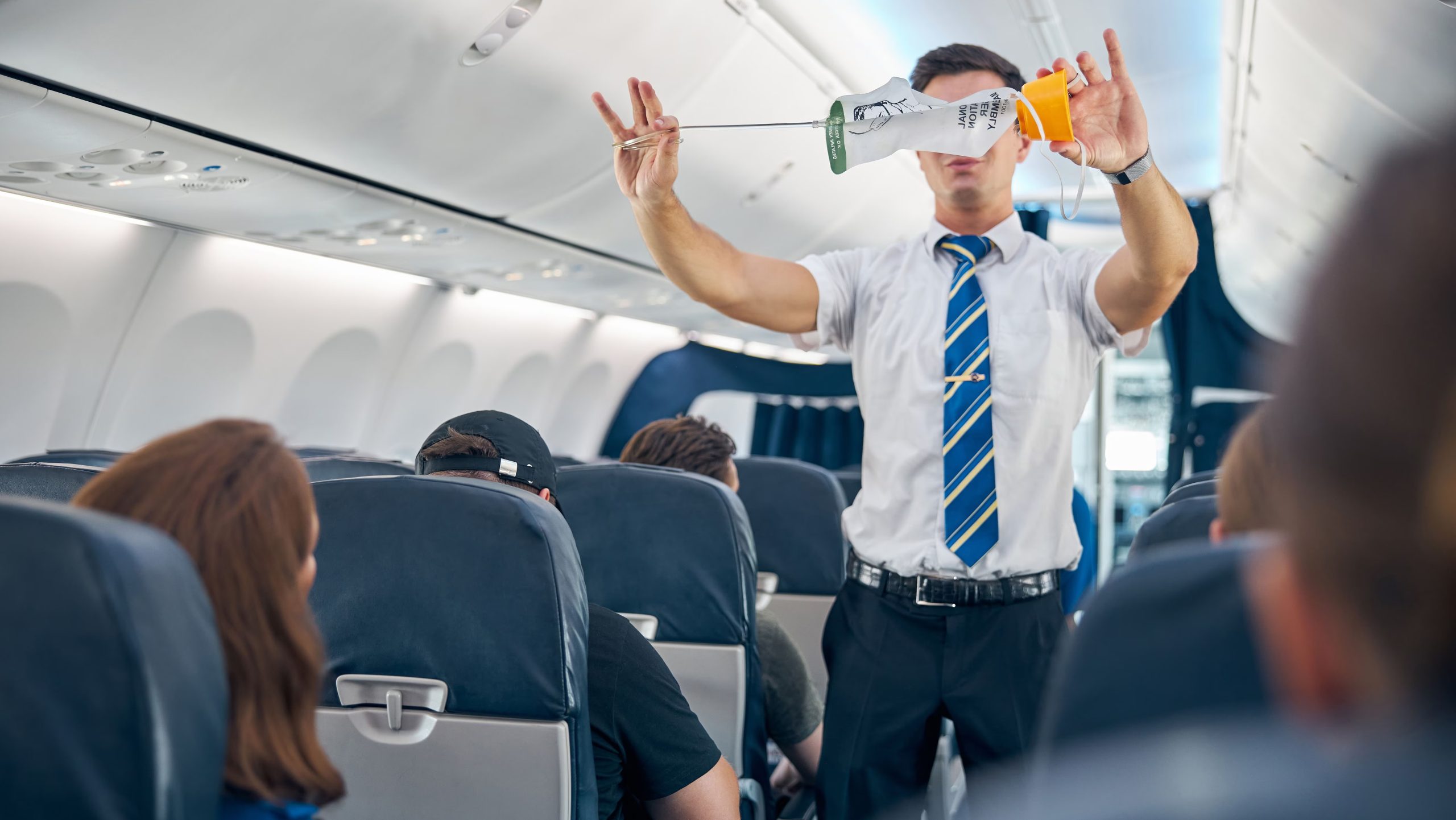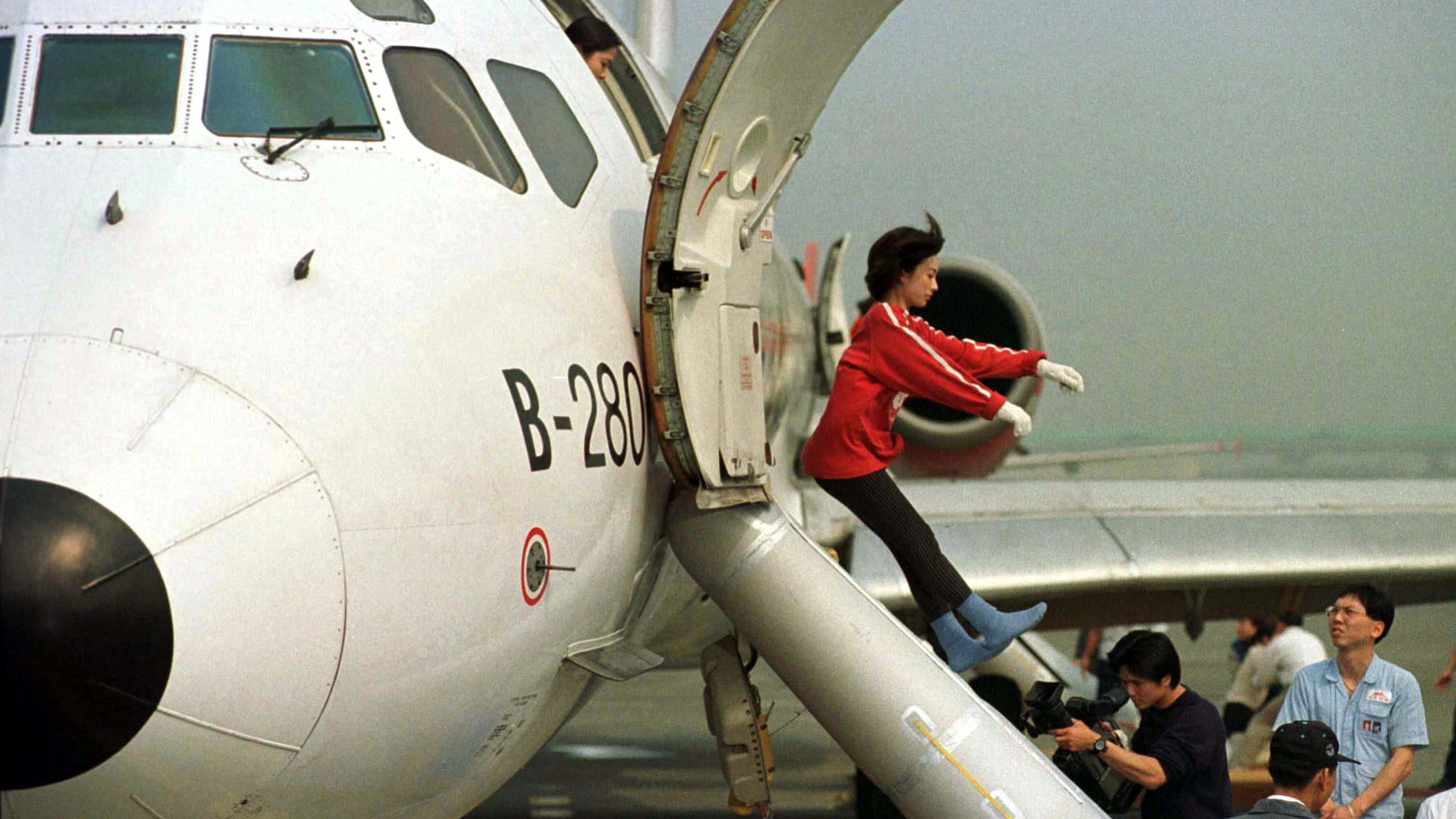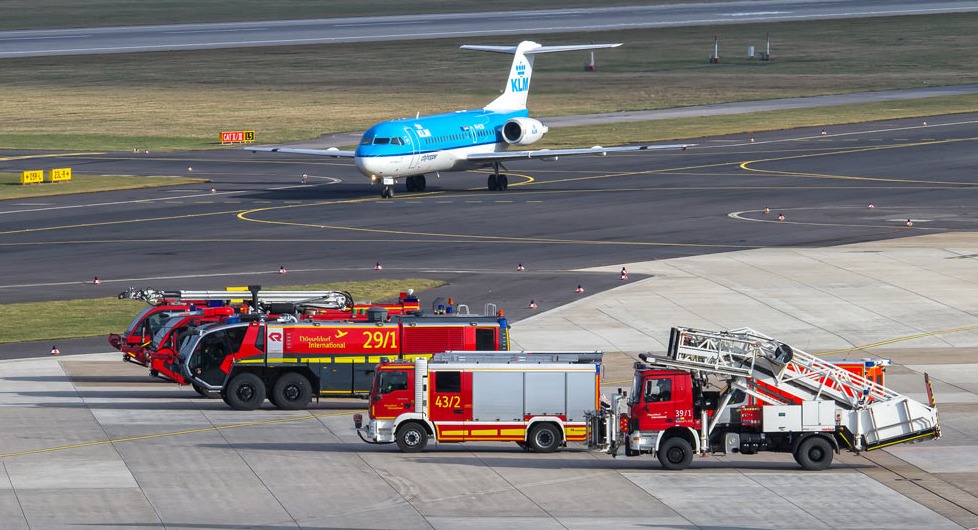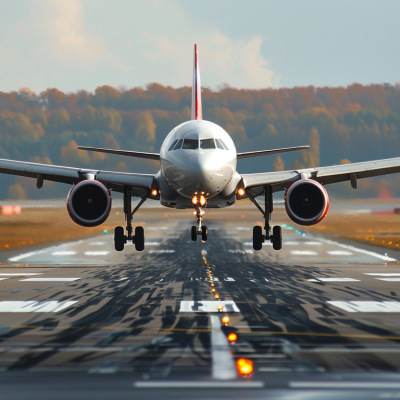Ever boarded a plane worried about your safety?
Flying can feel risky, especially after witnessing terrifying crash footage on the news.
The idea of being trapped in a crumpled metal tube fills us with dread.
However, did you know airplane accidents have a remarkably high 95% survival rate?
With the proper knowledge, your chances of walking away from even the worst disasters increase dramatically.
This blog will equip you with life-saving strategies researched by experts.
From selecting the safest seats to bracing for impact, you’ll learn techniques that could mean the difference between life and death.
Prepare to master a crucial skill – surviving a plane crash.
| Type of Accident | Survival Rate | Source |
|---|---|---|
| Plane crashes | 95.7% | NTSB accident rate for commercial flights and European Transport Safety Council’s estimate of the survivability rate for aircraft accidents worldwide |
| Car accidents | 65% | General Statistics |
| Motorcycle accidents | 50% | General Statistics |
| Train accidents | 90% | General Statistics |
| Boating accidents | 80% | General Statistics |
Preparation Before the Flight

Being mentally and physically prepared can boost your odds of surviving a plane accident.
While crashes are rare, taking proactive steps builds confidence and equips you with potentially life-saving knowledge.
According to research, airplane accidents have a high survival rate of around 95%.
With some straightforward preparation, you can increase your chances of safely emerging from even the most daunting scenarios.
Remaining calm and focused in an emergency is crucial.
Develop a mindset that channels your energy into survival actions rather than succumbing to fear.
Visualize yourself responding rationally and decisively.
- Identify your closest exits and count the rows to reach them. Mentally walk through the steps you’d take to get there safely and swiftly.
- This mental preparation hard-wires the information, preventing panic from clouding your recall.
- Clothing choice matters immensely in emergencies.
- Opt for tight-fitting clothes made from natural fibers like cotton, less prone to melting or catching fire.
- Practical, sturdy shoes enable mobility over debris and a swift exit. Avoid accessories or baggy garments that could become snagged.
1. Choosing the Right Seats
(A diagram of an airplane seating layout highlighting the safest seats.)
- Where you sit influences accessibility to exits.
- According to safety experts, aim for aisle seats within five rows of an exit, as these afford the quickest escape routes.
- If unavailable, opt for any seat as close to emergency exits.
2. Packing Essentials
(An image or a slider showing recommended survival gear items.)
- A few compact items in your carry-on can be surprisingly helpful.
- Pack a small flashlight to illuminate your path and a whistle to attract attention.
- Call for help if you are separated from the main group.
- Energy snacks and basic medical supplies are also wise additions.
3. At the Airport and Boarding
(A generic emergency exit map of a typical airliner.)
The choices you make during airport check-in and boarding can profoundly impact survivability.
With some strategic planning, you can dramatically improve your odds before stepping on the plane.
Optimize your chances of survival by making informed, safety-conscious decisions from the moment you arrive at the airport until you’re seated on board.
Familiarization with Layout: Study the safety card or airline app to understand the locations of all potential exits – over-wing, rear, etc.
Knowing multiple escape routes prevents being trapped if one path is blocked.
Recognition of Safety Features: Also note the locations of life vests, oxygen masks, and other key safety equipment relative to your seat.
Familiarizing yourself prevents wasting precious time searching.
4. Pre-boarding Preparations
- Boarding early gives you ample time to assess your seating area.
- Make sure your carry-on doesn’t obstruct the aisle, and make necessary seat changes.
- Once seated, reaffirm the locations of the nearest exits and obstacles between your seat and those routes.
- Refresh this mental map just before takeoff.
- Pay attention to pre-flight safety demonstrations, even if you’re a frequent flyer.
- Crucial details can change between aircraft models and airlines.
During the Flight
While air travel is statistically the safest mode of transportation, maintaining vigilance during specific flight phases can greatly improve your survival prospects in an unlikely emergency.
Most aviation incidents occur during relatively brief but critical periods.
Being aware and prepared during these times allows you to respond swiftly and decisively if needed.
1. Initial Minutes (Plus 3/Minus 8 Rule)
(A timeline or flowchart showing the critical actions to take within those time windows.)
- Safety experts say around 80% of accidents happen in the first 3 minutes after takeoff or the last 8 minutes before landing.
- These phases are the most hazardous.
- Stay especially alert during these time frames. Avoid headphones, keep shoes on, and secure belongings to prevent obstacles. Mentally reaffirm the locations of the nearest viable exits.
- Practical Steps: As soon as you are seated, quickly identify your closest exits and rehearse the exact steps to reach them quickly and safely.
- Revisit this mental mapping during the plus 3/minus 8 windows.
2. Mid-Flight Vigilance
- Regular Environment Checks: Periodically scan the surrounding area, verifying paths to emergency exits remain clear of luggage or other obstructions that could impede egress.
- Mental Rehearsal: Continue mentally walking through the actions you would take to safely reach an exit throughout the cruise portion of the flight. Visualize unhooking your seatbelt and clearing any carry-ons.
- Engagement with Safety Procedures: If safety briefings or announcements are made, listen closely. Review the safety card again, especially on longer flights, to refresh your memory.
3. Consistent Preparedness
- Strive to remain collected yet vigilant throughout the journey.
- Trust aviation’s excellent safety record while feeling empowered with a clear personal plan.
- Don’t hesitate to ask the crew if any safety procedures or features are unclear. Their expertise can fill knowledge gaps.
- Avoid excess alcohol that could impair mobility. Stay hydrated, periodically stretch your legs, and ensure footwear allows for easy movement if needed.
In Case of an Emergency

While incredibly unlikely, emergencies can occur during air travel. Responding swiftly and appropriately in those critical moments is vital for survival.
Understanding proper protocols and reacting decisively to unusual situations can greatly increase your odds of a positive outcome, even in the most challenging scenarios.
1. Immediate Actions
- Follow Flight Crew Instructions: As soon as any emergency becomes evident, immediately follow all directions from the flight crew without hesitation. Their training and leadership are essential.
- Assuming Brace Positions: If instructed, assume the recommended brace position based on your seating location.
2. Evacuation Protocols
- Recognition of Exits: Quickly identify the most viable exit path, as your nearest exit may be blocked. Keep secondary routes in mind.
- Obstacles and Aids: When evacuating, be prepared to encounter fallen luggage, debris, smoke, or even staircases. If available, avoid using evacuation slides by jumping in a leg-bent position.
- Orderly Evacuation: Leave all belongings behind and focus on reaching the exit. Move deliberately yet swiftly in the directed formation or posture to prevent falls and injuries.
3. Handling Fire Hazards
- Understanding Fire Risks: The presence of fuel and electrical systems makes fire one of the gravest risks in a plane crash. Fires can erupt with little warning and spread rapidly.
- Life Jackets: Never inflate your life jacket until completely outside the aircraft. Doing so inside can severely restrict mobility if a fire breaks out or the cabin fills with water or smoke.
- Cover your nose: If you detect a fire, immediately get as low as possible and cover your nose/mouth to avoid smoke inhalation. Use non-flammable materials like clothes to shield yourself from heat while moving toward an exit.
4. Overcoming Psychological Barriers
- Normalcy Bias: This is the inherent tendency to underestimate true danger by assuming events will return to normal. It can cause deadly delays in emergencies.
- Awareness and Preparation: Combat normalcy bias through meticulous mental preparation. Vividly visualize and rehearse possible scenarios ahead of time so unusual events immediately trigger your action plan.
- Action During Unexpected Events: When the shock occurs, do not freeze up. Your preparation empowers you to quickly orient yourself, eliminate distractions, and decisively execute the escape plan while adapting to changes.
Learn techniques for self-calming, like focused breathing. Applying these while modeling composure for others prevents panic and promotes order.
Join online networks or local groups that allow you to share advice and experiences about handling air emergencies effectively. The wisdom will become invaluable.
Post-Crash Survival in Plane Crashes

The moments immediately following a plane crash are among the most critical for survival.
Prioritizing safety and taking decisive action can mean the difference between life and death.
First, quickly assess your physical condition and surroundings.
Look for immediate threats like fire, unstable wreckage, or hazardous materials requiring urgent evacuation.
If possible, swiftly yet cautiously exit the aircraft following guidance exit paths or instructions from the crew.
Move upwind and a safe distance away before evaluating the next steps.
1. Ensure Safety Once Outside the Aircraft
- Distance from Debris: Maintain a safe buffer from the crashed plane in case of fire, explosions, or hazardous fumes. Continue moving upwind and away from potential hazards.
- Finding Shelter: Once a safe distance is reached, immediately look for or create shelter from the elements using any available materials like seat cushions or sections of fuselage. Insulation is crucial.
- Signaling for Help: After shelter, make yourself visible to rescuers. Use bright fabrics, signal mirrors, smoke, or ground-to-air signals in open areas. Remain in one location.
2. Basic Survival Techniques
- First, locate any available fresh water sources, as hydration is critical. Check for clarity and strainability.
- Secure high-protein food sources like insects or fish if possible.
- Treat any injuries by cleaning wounds, applying pressure, and improvising splints/bandages. Watch for signs of shock, exposure, or infection—ration supplies.
- If conditions allow, build a containable fire for warmth, boiling water, and smoke signaling. Use lighters, batteries, or friction with dry fibrous materials.
3. Long-Term Survival Strategies
- Maintain a positive mental attitude focused on manageable short-term goals. Finding purpose through routines and creativity boosts morale.
- Maximize your resources by improvising tools, better-insulated shelters, storage pouches, water containment, etc. Get inventive and stay active.
- Use sun positioning, star patterns, or other guides to maintain general direction. Learn basic signaling and ground-to-air codes.
4. Preparation for Rescue
- Preparing for Interaction: Once rescuers arrive, be ready to explain details like the number of survivors, locations, injuries, supplies, etc., concisely. Follow all their directions.
- Maintaining a Presence: Mark days and maintain routines to stay visible and indicate the duration of your ordeal, which will assist rescuers in understanding your situation.
- Staying Visible and Vigilant: Never give up attracting attention through any means possible,, such as signal fires, ground markings,, or waving bright colors. Survival depends on your perseverance.
Conclusion
Despite common fears, data reveals a remarkable 95% survival rate for airplane crashes, underscoring the importance of acquired knowledge.
Integrating best practices into pre-flight routines, such as seat selection, practical attire, and mental rehearsal, significantly boosts survival odds.
While the aviation industry maintains high safety standards, adopting a proactive mindset enhances personal control over survival.
Paying full attention to preflight safety briefings and familiarizing oneself with aircraft layouts are essential habits.
Internalizing core principles from this guide instills confidence in calmly handling extreme air emergencies.
Preparedness, fundamentally about cherishing life by maximizing readiness, applies beyond flying, requiring resilience and quick thinking.
Ultimately, being prepared preserves life, emphasizing its preciousness.






